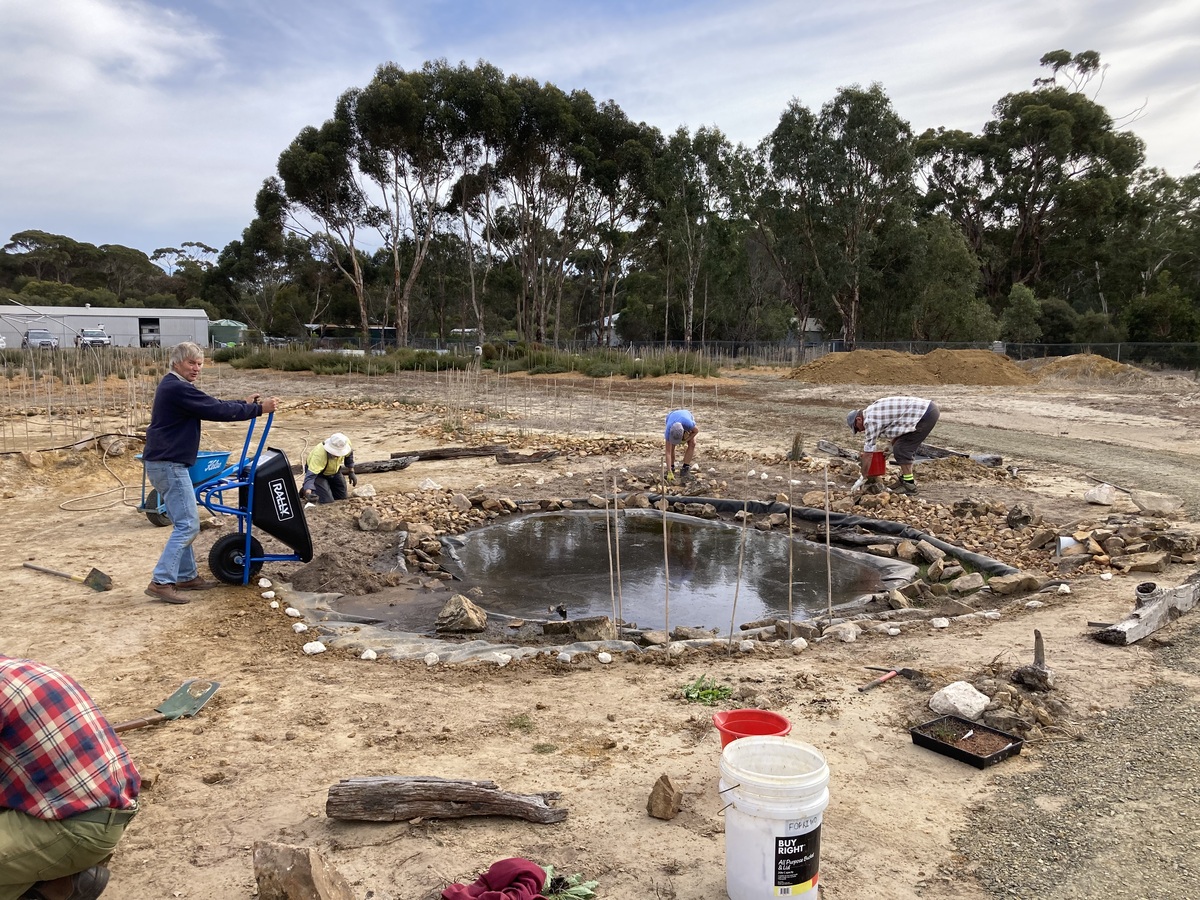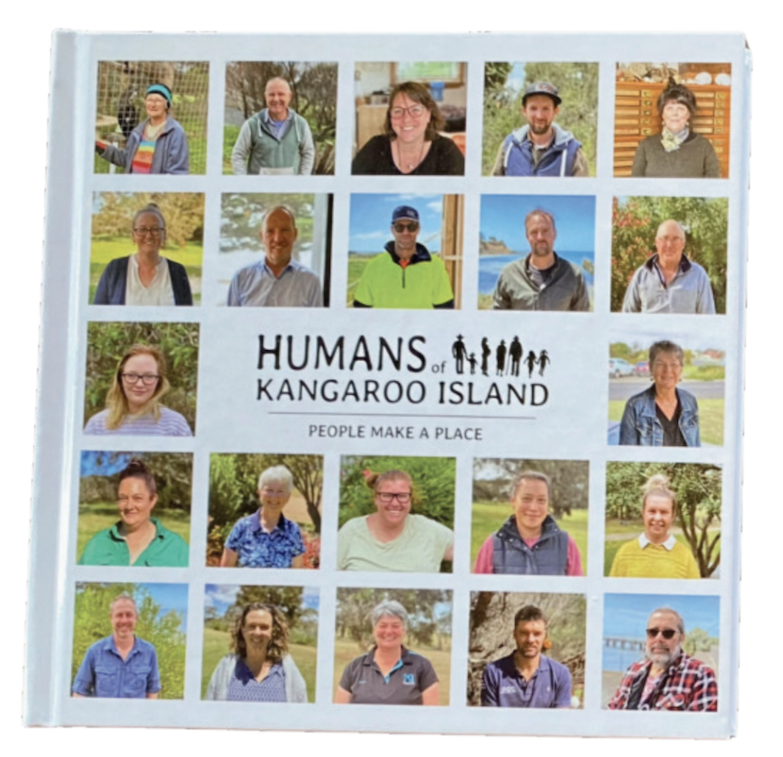Resilience and renewal on Kangaroo Island
Staff Reporters
10 November 2024, 1:32 AM
 Kangaroo Island Rare Plant Garden
Kangaroo Island Rare Plant GardenWriter: Lara Pacillo. Courtesy Coast Lines Magazine
Four-and-a-half years have passed since the Black Summer bushfires on Kangaroo Island. Nature is flourishing again, with produce thriving, animals multiplying, and communities rebuilding.
But it has not been forgotten what was lost in December 2019, when nearly half the island burned. A total of 211,474 hectares of land, 32 000 animals, two human lives, homes, businesses, and crops were all lost to the fires.
“We lost our entire property, our house, all our infrastructure, livestock, machinery, everything,” says Sabrina Davis, one of around 4500 residents of Kangaroo Island.
Forced to relocate to the opposite end of the island with her two young children while her husband focused on recovering the property, Sabrina felt isolated.
This wasn’t helped by COVID, which came along only a few months later. Yet from this isolation, her Humans of Kangaroo Island storytelling project was born.
Sabrina began speaking with others in the community and sharing their stories online with the island and the wider community. Her platform soon grew a strong following.
“In a time of a lot of grief, trauma, frustration, challenges, recovery, and COVID, I think the stories gave people a moment out of their life where they could just relax and read about how their neighbours and friends were going, or they could find out something new about that community member they had maybe seen before in the supermarket and never spoken to,” Sabrina says.
“The project ended up creating a lot of connections and became a conversation starter for many people. It created a positive light in what was quite a dark time.”
In the years since, Sabrina has published a book collating the Humans of Kangaroo Island stories, hosted a music festival, and created a documentary, all to raise funds for the island’s recovery.
She now works with the Australian Red Cross in her efforts to support other disaster-affected families.
“I can use my personal lived experience to help families across Australia, with the hope that some of the information I've learned can be helpful for others who find themselves in that unfortunate situation.”
Maintaining properties is a high priority on Kangaroo Island, where residents are more focused than ever on gathering resources and taking preventative measures to avoid repeating the past.
Among these innovations is Embarr — a new smart bushfire sprinkler that automatically switches on and off in response to bushfire threats.
“Embarr detects flames from a couple of hundred metres away and then runs a deluge of water over your property. It then switches off again,” explains co-owner Paul Sandercock.
Embarr was founded by firefighter and paramedic Graham Pole. He came up with the idea for his elderly father, who lived in a bushfire-prone area, concerned he would not be physically able to start the bushfire pump.
Since entering the market two years ago, Embarr’s fire detection sprinkler has grown in popularity Australia-wide and on Kangaroo Island. The product extends and maximises a pump’s fuel and water supply by activating and deactivating itself, reducing potential damage and helping to save lives.
“Embarr offers the confidence to get out early and know that your investment in your sprinkler system and your house will have a better level of protection because of the automation,” Paul says.
“Our tech means you can get your family and yourself out of there and leave it to the virtual firefighter to do the job that humans had to do in the past.
“People lose lives, they lose pets, they lose property — fires leave a terrible scar. We’re offering something to provide more protection.”
The Kangaroo Island Rare Plant Garden is another future-proofing initiative that sprouted after the Black Summer fires.
The project is a collaboration between the South Australian Seed Conservation Centre, the Nature Conservation Society of SA, and Bio·R, funded by the Black Summer Bushfire Recovery Grant.
It started out in 2022 with about 80 species — a mix of rare plants and plants endemic to Kangaroo Island — within a 75m by 150m space. Now, in 2024, the Kangaroo Island Rare Plant Garden is home to over 100 species, with the garden growing by 20 per cent each year.
“The idea is to collect the seed, grow the plants, and then get them back into the wild so that the plants that are only found in one or two locations on Kangaroo Island can have multiple populations across the island,” explains Bio·R Nursery Manager Penny Paton.
“So if there’s a fire or another emergency, then we’ve actually got some other insurance populations somewhere else on the island.”
Kangaroo Island and the Mount Lofty Ranges region is one of 15 biodiversity hotspots in Australia; an area recognised for its rich flora and fauna, particularly those that are endemic or restricted to a specific location. This significance is recognised by the government and community.
Through the Kangaroo Island Rare Plant Garden, people volunteer in weekly workshops, which involve weeding, planting, watering, and collecting seed. There is a focus on educating the community, particularly school kids, about the unique plants. The garden represents resilience, futureproofing and community passion.
“I think immediately after the fires, it was really important to have things that were forward-looking and also strategies in place to mitigate against the effects of such a catastrophic event,” Penny says.
“Our project, along with many others that were coming to life on the island, gave people something positive to focus on.
“Almost half of the island was burnt in the fires, and a lot of biodiversity was impacted —some of which will not come back. I think protecting what we have and having insurance policies against such disasters in the future is really important in such a biodiversity hotspot."
Sabrina Davis says Kangaroo Island has always been a community that is very well connected and very good at supporting each other, and this has only grown stronger through adversity.
“I think that's why recovery happened so well, because we are just such a resilient community,” she says.
“Most people live here for the same reasons — we like beautiful beaches and freedom, we like hanging out with like-minded people, and all of us really appreciate having this beautiful big space to ourselves.
“There have been more and more connections created over the years since, and I think they will mean that even if we need to prepare for or experience another disaster in the future, the power of the network within our community is much stronger than it was before.”
WIN your copy of Humans of KI here
